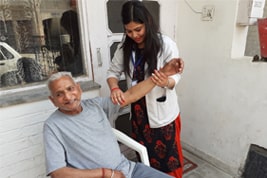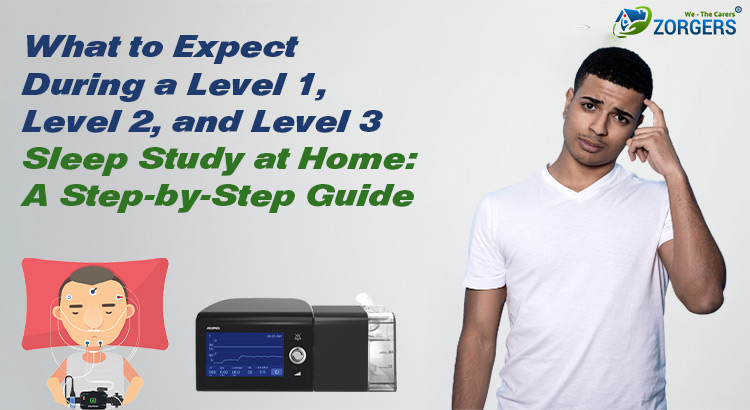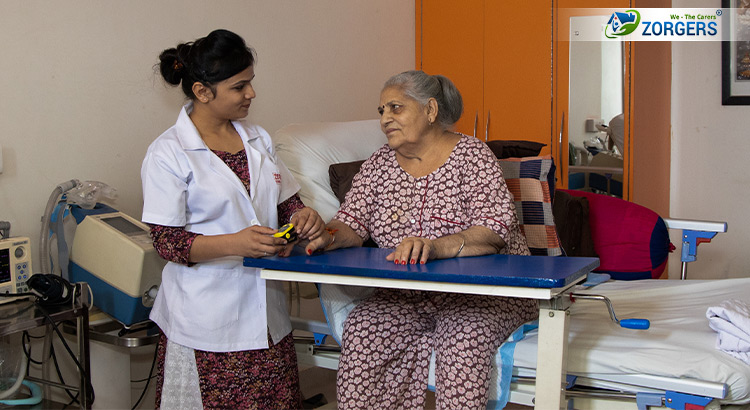If you are scheduled for a sleep study but are unsure about the different levels of sleep studies and what they entail, this blog is for you. At Zorgers Home Healthcare, we offer various levels of sleep studies to cater to different needs. In this comprehensive guide, we will walk you through the step-by-step process of a Level 1, Level 2, and Level 3 sleep study conducted in the comfort of your own home.
Level 1 Sleep Study:
A Level 1 sleep study, also known as polysomnography, is the most comprehensive and detailed type of sleep study. It involves the use of advanced equipment to monitor multiple physiological parameters. However, Level 1 sleep studies are typically conducted in a sleep center rather than at home due to the complexity of the equipment setup and the need for on-site monitoring by sleep technologists.
Level 2 Sleep Study:
A Level 2 sleep study is a simplified version of a Level 1 study that can be conducted at home. It involves the use of portable sleep monitoring devices that record essential sleep data. While Level 2 studies provide valuable information, they may not capture the same level of detail as Level 1 studies. They are often recommended for individuals who require basic sleep monitoring or have suspected sleep apnea.
Step 1: Consultation and Setup
Before the sleep study, you will have a consultation with a sleep specialist who will determine the appropriate level of study for your specific needs. If a Level 2 study is recommended, a sleep study kit will be delivered to your home. The kit will include the necessary equipment and instructions for setup.
Step 2: Setting Up the Sleep Monitoring Device
Following the provided instructions, you will set up the portable sleep monitoring device. The equipment typically includes sensors and electrodes that need to be attached to specific parts of your body, such as your chest, finger, and leg. The device will record important sleep data, including breathing patterns, heart rate, and oxygen levels.
Step 3: Bedtime Routine
Once the sleep monitoring device is set up, you can proceed with your regular bedtime routine. It’s important to follow your usual sleep habits as closely as possible to ensure accurate results. Ensure your sleep environment is comfortable, quiet, and conducive to a good night’s sleep.
Step 4: Overnight Sleep Monitoring
During the night, the sleep monitoring device will continuously record your sleep data. The device is designed to be unobtrusive, allowing you to move freely and sleep naturally. Try to sleep as you normally would, even though you are wearing the equipment. The device will capture the necessary information for analysis.
Step 5: Morning Routine and Device Removal
In the morning, follow the provided instructions to remove the sleep monitoring device. You may be asked to complete a sleep log or questionnaire about your sleep experience. Once the device is removed, you can go about your usual morning routine.
Level 3 Sleep Study:
A Level 3 sleep study involves simplified sleep monitoring with fewer sensors compared to Level 2 studies. It is often used to diagnose specific sleep disorders, such as sleep apnea, where continuous positive airway pressure (CPAP) therapy is being considered. Level 3 studies provide valuable data while offering greater convenience and comfort for patients.
Conclusion:
Understanding the different levels of sleep studies and what to expect during each can help alleviate any concerns or confusion you may have. At Zorgers Home Healthcare, we are committed to providing personalized care and convenience by offering sleep studies that can be conducted in the comfort of your own home.
Whether you require a Level 1, Level 2, or Level 3 sleep study, our experienced team will guide you through the process and ensure accurate results. If you have any questions or concerns regarding your upcoming sleep study, do not hesitate to reach out. Remember, identifying and addressing sleep disorders is crucial for improving your sleep health and overall well-being.






Sleep study test
Looking for Level 1 Sleep Test in THane